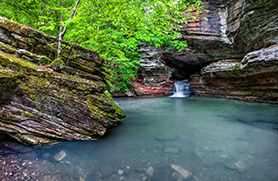Sadly about 3 weeks ago, my 6 year old Epson 9900 finally developed a non-clearable clog in the magenta. I tried out all the tricks I knew of, CL-1 through CL4, SSCL, and Super strong cleaning cycle, none of them would clear this clog. So, the next step was to find out the cost for a new head. I had already replaced the original head about 2.5 years ago on this 9900. The cost this time was quoted at 3,000.00. And that was an estimate based on a perfect installation, no problems. The hourly rate of the Epson repair which is done by Decision One, or Fuji (I have always used Decision One for past repairs), is around 120.00 per hour and the average time for a head replacement is 4 to 5 hours. I also wanted to have my dampers replaced since I was having issues with them also, and that added another 450.00, so around 3.5K. For a new head, dampers and 90 day warranty.
I quickly decided it was time for the P9000, at 4K, ($3,995.00) with 1K rebate, then add the cost of one set of ink tanks, @ 350ml for everything besides green, orange and matte black where I stayed at 150ml. Another 1.6K.
Of course the single biggest problem is getting rid of the old 9900, moving it out and then getting the P9000 out of the box to my printer room. I was able to find a home for my 9900, as it still would be a great proofing printer, as the only issue was a permanent clog on magenta, about 1/5 of the entire nozzle pattern, all one big missing block. The P9000 seemed to my team about 40 or so pounds heavier than the 9900 (I had removed all the ink and M/A tanks), but we got it done.
I WAS SAD TO SEE THAT EPSON IS NOW FOLLOWING MANY COMPANIES WITH NO PRINTED USER MANUAL. I used my manual quite a bit on the 9880 and 9900, so I quickly found the pdf for the manual and pulled it. down.
The installation was quick, just following the steps in the setup guide, all went OK. I was able to charge the printer, align the heads, and print out a perfect nozzle check. Based on the information from my dealer DTG in Florida, I did the following:
- Turned ANC (automatic nozzle check) to OFF
- Set the timer clean to once ever 48 hours
Epson sells the P9000 as all new state of the art technology, with an improved head design that supposedly has some form of ink repelling coating to help decrease clogs. They also claim the Dmax for blacks is better with greater detail in shadows. The inkset is still 10+1, (matte black) but the entire set claims to have a more archival life over the ink in the 9900, closer to 100-150 years. Also the yellow has supposed greater Dmax.
The first few prints I made were on Lexjet E Satin 300 weight, (RC paper) and Canon Byarta 340 an 310 weight paper. I used all canned profiles from the manufacturers. The prints looked great, very smooth tonality and no issues with banding or bleeding. Overall impressive. I printed everything in 1440 dpi, not 2880 and quality setting of 4, where I tend to run all my prints.
Quick note: Epson clearly states that the P9000 is designed to have less bronzing and gloss differential than the 9900. After 25 or so prints all on glossy paper, I can clearly state that gloss differential is THE SAME. Bronzing may actually be slightly better, but on prints with a blue sky and white clouds I still could see some bronzing on Lexjet E Satin and Moab Lasal Luster. The bronzing on Canon Platine was about the same as on the 9900, but did seem a bit better with Canon Byarta 310 and 340 weight.
Next came profiles and for this I used my iOne profiling system, iOne Profiler pro, with the latest device and 1728 patches. All the profiles came out fine on both paper and canvas and I was starting to feel that maybe Epson had stepped up the game with this printer, at least on clogging. I had made over 50 test prints, and not gone for one nozzle check. However thing changed pretty quickly once I had to power off the printer.
In my location, Arkansas, we get strong lightening storms. I am working out of my house, in a residential neighborhood, so I have no real protection against a strong lightening strike, besides a local UPS. No $200.00 or $500.00 UPS is going to stop a near or direct strike, net you just have no control over this much power. I have had 2 major strikes on my house, both in the yard. Both took out at least 1/2 of the power in the house, the 2nd one took out pretty much everything that was plugged in, burned out many of my wall outlets and a few of the circuit breakers in my main fuse box. Net, when a major storm is coming, I have to both power off and unplug all my PC’s Macs and printers.
The P9000 was turned off for 2 days. I did a normal power off, and then unplugged it. The first thing I did on power up was run a nozzle check pattern. So far, all the patterns had been clear. To my dismay, I found that I had one clog in the green. Amazing that only powering off the printer for 2 days, would cause a clog. This one clog is really not a show stopper as missing one single part of a pattern is very hard to see in a print, even if you make a solid print of just that color. But it’s still a brand new printer and I was surprised to see that things really have not changed much from the 9900 to the P9000 in regards to the ever present issue of clogs.
With the 9900 I would have simply powered off, powered back up in Maintenance mode, and run a CL-1 pairs cleaning on orange and green. That would have taken it out for sure. Well maintenance mode on the P9000 is not the same. There appears to be no CL-1 through CL4 or even a SSCL or SS type of cleaning. Epson dialed way back the capabilities of this mode at least outwardly. They may have hidden things somewhere else, anyone’s guess.
So with the P9000, you only have the option to do a pairs cleaning from the main menu, and at only one strength, which will use a lot more ink than a CL-1 style cleaning. I have decided to see what a timer cleaning will do before I try a pairs cleaning. I set the timer cleaning to go off after 6 hours so in the morning I will check back to see if it ran and if so did it clean the clog.
What’s now very clear to me is the following:
- Epson did not really change the heads at all, I would be in fact surprised if the 9900 and P9000 don’t use the same part number for the heads.
- The ink repellant coating, well lets just say that’s all marketing speak.
- It’s clear to me that Epson intends for you to leave the printer ON, all the time. Allow it to go to sleep, but not power it off.
- The addition of the “timer cleaning” is just a way for Epson to get around the constant mild clogs that the 9900/9000 get since you just set up a period of time for a cleaning cycle to run. This is a bit different than the 9900.
- The 9900 and P9000 both have ANC (Automatic Nozzle check), which can be run after every print or periodically. I turned it off on my P9000 and went for the straight timer clean.
There are not many options out there for 44″ printers in an affordable range. HP is very old tech, (Z3200), Canon’s 8400 is newer and allows for the user to replace the heads. In fact Canon intends for the head to be replaced. Instead of cleaning a clogged nozzle, Canon maps it out. When you have reached the total number of nozzles mapped out, you have to replace the head for around $450.00.
I had hoped that Epson really worked some magic on the P9000 in regards to power off and clogs, but from only having mine on for 2 weeks and seeing a clog just like the 9900, it appears that the technology is pretty much the same, net you will get clogs if you power off the printer and break it’s timer clean runs.



Recent Comments